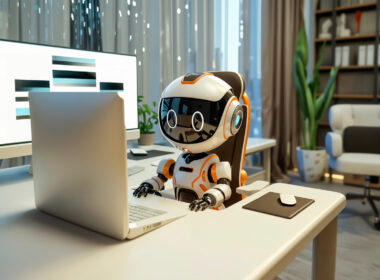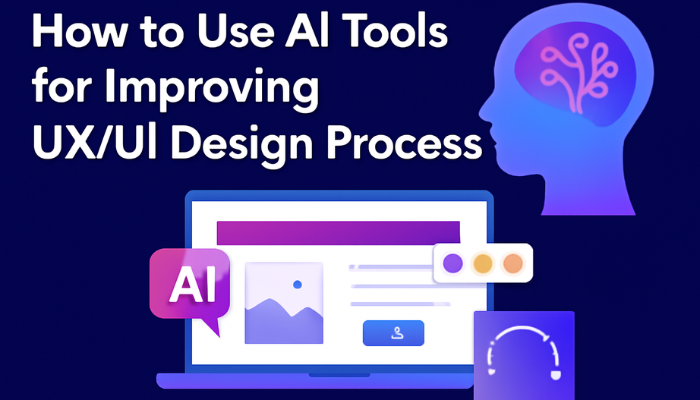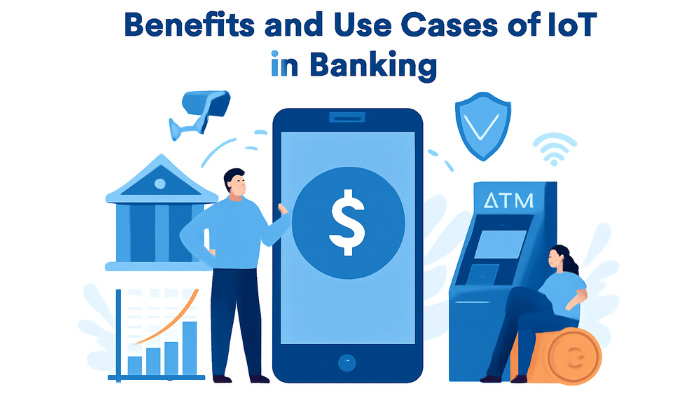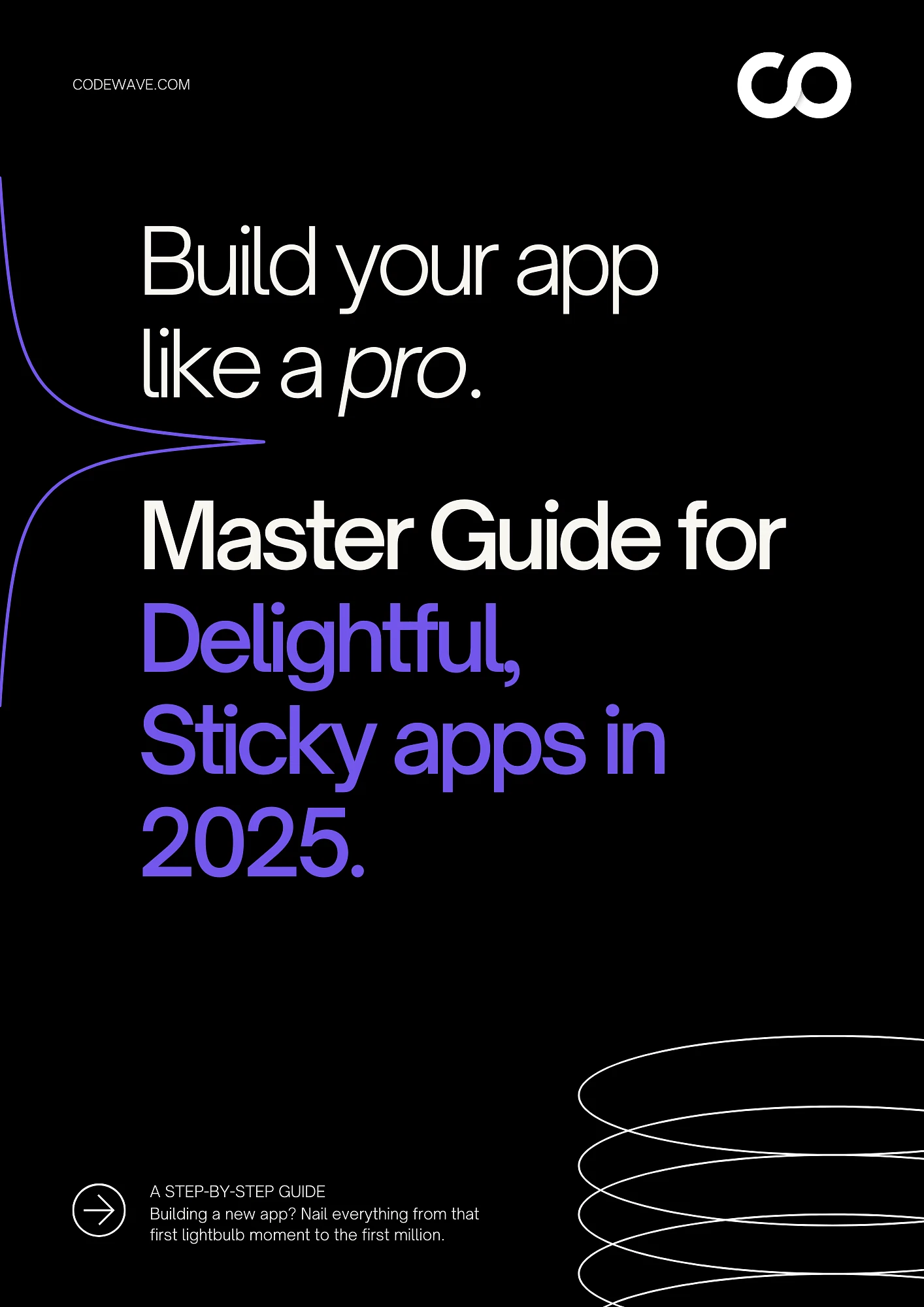In today’s digital world, user experience can make or break a product. The pressure on UX/UI teams to deliver flawless, intuitive, and engaging interfaces is higher than ever. As user expectations grow, demanding faster, personalised, and seamless experiences, the old ways of designing with static layouts and manual prototyping just aren’t enough.
In fact, over 70% of users say they’ll abandon an app or website after a poor experience. That’s a clear warning for any business that relies on its digital presence.
The good news? AI is changing the game. It analyses user behaviour, predicts actions, and automates repetitive design tasks. This speeds up delivery, cuts operational costs, and allows teams to focus on creating meaningful, user-friendly experiences. For business leaders, it means faster launches, stronger customer retention, and a sharper competitive edge.
As Steve Jobs put it, “Design is not just what it looks like and feels like. Design is how it works.” With AI, it’s about making products both look better and work smarter for every user.
In this blog, we’ll unpack how AI improves the UX/UI process — accelerating workflows, personalising experiences, and enabling data-driven design decisions that directly impact business growth.
Key Concepts of the UX Design Process
Before we explore how AI improves UX/UI design, it’s important to understand the basic steps that make a design project successful. From user research and wireframing to prototyping and testing, each stage plays a vital role in creating an experience that connects with your audience.
- User Research: This involves gathering information about your target users, including their needs, behaviors, and pain points. Conducting interviews, surveys, and observations helps you base your design decisions on real insights instead of assumptions.
- Information Architecture: This stage involves organizing and structuring the content and features of your product so users can navigate it easily. Clear menus, logical flows, and well-planned layouts make it simple for users to find what they want.
- Wireframing and Prototyping: Wireframes are simple sketches or blueprints of your design that focus on layout and structure without distractions. Prototypes add more detail and allow you to simulate how the product will work. Both are essential for testing ideas early and making improvements.
- User Testing: Testing your designs with real users uncovers problems and areas for improvement. It ensures that your product meets user expectations and helps avoid costly fixes after launch.
- Iteration: Based on feedback and test results, you refine your designs, making them better step by step. This continuous improvement cycle ensures the final product is polished and effective.
By following these steps, you build a solid foundation for creating experiences that satisfy users and support your business goals.
While these steps form the backbone of a strong UX/UI design process, businesses often face challenges that can slow progress and affect the quality of the final product. Let’s look at some of the most common obstacles you might encounter.
Common Challenges in the UX/UI Design Process
For businesses, particularly C-suite executives, SMEs, and product leaders, designing exceptional user experiences is critical, but the road to achieving this is filled with significant hurdles. The following challenges are commonly faced during the UX/UI design process:
Designing a user experience that stands out is not simple. Whether you lead a company, manage products, or run a small business, you will likely encounter some of these roadblocks:
Long Design Cycles
Creating and improving your interface takes more time than you expect. From coming up with ideas to building prototypes and testing with users, you often find yourself repeating steps. This slows down your product launch and can make it hard to keep up with competitors.
Difficulty Understanding How Users Actually Behave
It’s hard to know exactly how people will use your product before they do. If you rely on guesses or only a few tests, you risk designing something that doesn’t match user needs. Without clear insights from real users, your design may fail to engage and satisfy them.
Balancing Personalization and Brand
Users want experiences that feel tailored just for them. But at the same time, your brand needs to look and feel the same across all platforms and devices. Finding the right balance between personal touches and a unified brand image is challenging and can cause users to feel confused if not done well.
Tech and Trend Demands
New tools and design styles emerge all the time. Staying updated and applying the newest trends can feel overwhelming, especially if you don’t have enough time or expertise. Falling behind in design innovation may put your product at a disadvantage.
Tight Deadlines
When time is limited, you may feel pushed to finish designs quickly. This rush can cause you to miss important details that impact user experience. The quality of your design suffers when speed takes priority over care.
Limited Budgets And Small Teams
If you don’t have enough people or money, it’s tough to manage all parts of the design process. Prototyping, testing, and revising all require time and resources. Doing all this with less support can lead to compromises in quality.
Handling Too Much User Feedback At Once
Feedback from users is valuable, but it can also be overwhelming. When you have a large amount of comments and data, figuring out what to focus on becomes difficult. This confusion can slow down decision-making and make it hard to improve your design effectively.
Finding The Right Mix Of Creativity And Functionality
Design should look good and work well, but these goals don’t always match. Sometimes, what’s visually exciting may not meet user needs or business goals. Balancing these elements requires careful decision-making.
Adapting to User Changes
User expectations don’t stay the same. What worked last year might not work now. Staying relevant means adjusting your designs regularly, which is tough when you have limited flexibility or resources.
Teamwork And Communication
Designers, developers, and product managers need to collaborate closely to build a great product. But misunderstandings and unclear expectations can cause delays and mistakes. These issues hurt the quality and consistency of your design.
Inconsistent Workflows
Without a clear and shared process, your team may repeat tasks, use different design styles, or lose alignment. This inconsistency wastes time and increases the chance of errors, ultimately delaying your project.
How AI Solves UX/UI Design Challenges
The challenges in the UX/UI design process can often seem overwhelming, especially when you are trying to stay ahead in a competitive market. However, the integration of Artificial Intelligence (AI) is transforming the design landscape.
AI not only streamlines time-consuming tasks but also enhances decision-making, helping you create user-centric, personalized designs faster and more efficiently. Here’s how AI directly addresses these key challenges:
Streamlining Operational Efficiency
AI automates time-consuming design tasks like layout structuring, content placement, and visual adjustments. By removing routine, manual work from your design pipeline, it frees up your teams to focus on high-value activities such as customer strategy, product differentiation, and business innovation, cutting project timelines without sacrificing quality.
Turning User Data into Predictive Business Insights
AI analyses behavioural patterns in real-time to forecast how customers interact with your product. It highlights what captures user attention, where friction points occur, and which features drive engagement. This empowers leaders to make faster, data-backed decisions on product improvements, feature prioritisation, and customer experience investments.
Delivering Personalised Experiences at Scale
AI enables hyper-personalisation by dynamically adjusting content, layouts, and design elements based on individual user behaviours and preferences, all without increasing operational overhead. This ensures every customer touchpoint feels relevant and seamless, strengthening loyalty and driving higher conversion rates.
Accelerating Innovation Cycles
By rapidly generating and testing multiple design variations based on set criteria, AI reduces the guesswork in product design. It helps leadership teams validate ideas quicker, optimise UX strategies, and stay ahead of market trends — transforming design into a business growth lever, not a bottleneck.
Enhancing Customer Feedback Loops
AI enables continuous, real-time analysis of how users interact with digital products, providing immediate insights into what works and what doesn’t. This shortens feedback cycles and allows for faster, more effective UX refinements, leading to higher customer satisfaction and reduced churn.
Future-Proofing Digital Interfaces
As voice and gesture-based technologies become mainstream, AI ensures your products remain intuitive and accessible. It supports the development of hands-free, intelligent interfaces that respond naturally to user commands and gestures, positioning your business ahead of evolving digital expectations.
These AI-driven interfaces create more intuitive user interactions and open up new ways of designing for emerging platforms, all while providing seamless and hands-free experiences for users.
Tired of Slow Design Cycles and Guessing User Behavior?
Codewave uses AI to speed up design and predict user actions.
Alright, so now that we’ve covered how AI can totally revolutionize your UX/UI design process, let’s dive into some of the cool AI tools you should be using. Whether you’re struggling with repetitive tasks or trying to predict what your users want before they even know it, these AI tools have got you covered.
Also Read: Top 10 Product Design Companies to Work With In 2024
Key AI Tools for UX/UI Designers
Here are some popular AI tools that can make the design process easier and faster. Each tool offers unique features that help with different parts of designing great user experiences.
1. Figma with AI Plugins
Figma is a cloud-based design tool where teams can create user interfaces together in real time. With AI-powered plugins added, it helps automate small design tasks and suggests improvements as you work.
Key Features:
- Real-time Collaboration: Designers, developers, and stakeholders can work on the same file at once, making teamwork smooth and faster.
- AI Suggestions: The plugins offer smart tips, like adjusting spacing or aligning elements for a cleaner look without manual effort.
- Auto Layout: Automatically arranges elements on your screen to keep everything balanced, especially when resizing or changing content.
- Content Generation: Some plugins can generate placeholder text or images automatically, saving you the trouble of finding or creating filler content.
- Version Control: Keeps track of every change, so you can go back or compare versions easily.
Use Case: Imagine designing a mobile app screen where you keep tweaking button sizes and text spacing. Instead of adjusting every element by hand, the AI plugins suggest the best spacing and automatically rearrange items so the design looks neat and balanced. This helps you finish the screen faster and with less hassle.
2. Adobe Sensei
Adobe Sensei is an AI system built into Adobe’s creative software. It uses machine learning to automate routine tasks and offers smart tools that assist designers in making better choices quickly.
Key Features:
- Smart Crop: Automatically crops images to focus on the most important parts, so your designs always highlight what matters.
- Asset Tagging: Tags images and files with relevant keywords, making it easier to search and organize large collections.
- Color Palette Creation: Suggests color combinations based on your brand or mood, so you don’t have to experiment endlessly.
- Facial Recognition: Detects faces in images to help with personalizing content or making sure important parts are visible.
- Predictive Analytics: Analyzes past projects and user data to give recommendations that can improve future designs.
Use Case: If you’re creating a marketing banner and need to fit an image into multiple sizes, Adobe Sensei crops it automatically to keep the main subject visible. It also suggests color themes based on your company’s branding, saving you time and ensuring consistency.
3. Uizard
Uizard is an AI-powered design tool that turns your hand-drawn sketches or simple text descriptions into working digital designs and prototypes quickly.
Key Features:
- Sketch-to-Wireframe: Upload a photo of a hand-drawn sketch, and Uizard converts it into a clean digital wireframe instantly.
- Text-to-Design: Describe your app or webpage in words, and Uizard creates a design based on your description.
- Templates Library: Offers pre-made templates to speed up design creation, which you can customize as needed.
- Drag-and-Drop Editing: Easily adjust your design with simple tools without deep design skills.
- Export Options: Download your design in formats developers can use, like PNG or HTML.
Use Case: Say you have an idea for a new app but only a rough sketch on paper. You snap a photo, upload it to Uizard, and it instantly turns your sketch into a digital wireframe you can share with your team for feedback or further edits.
4. Microsoft Sketch2Code
Sketch2Code is a Microsoft AI tool that reads your hand-drawn UI sketches and converts them into working HTML code, helping bridge the gap between design and development.
Key Features:
- Handwriting Recognition: Understands shapes and UI elements drawn on paper.
- Code Generation: Translates those drawings into clean, ready-to-use HTML markup.
- Component Identification: Recognizes buttons, text boxes, images, and other common UI parts.
- Cloud-Based: Accessible from anywhere with internet access, no need to install software.
- Easy Integration: Works well with other Microsoft design and development tools.
Use Case: After sketching a web page layout on a whiteboard, a designer uploads the image to Sketch2Code. The tool turns the sketch into HTML, giving developers a starting point for building the page without manually coding from scratch.
5. Hotjar with AI Insights
Hotjar is a tool that tracks how users interact with your website or app. Its AI features analyze this data to highlight issues and suggest improvements for the user experience.
Key Features:
- Heatmaps: Visualize where users click, scroll, and spend most of their time on a page.
- Session Recordings: Watch recordings of real users navigating your site to spot pain points.
- AI Pattern Recognition: Finds common behaviors or problems without manual data sifting.
- Survey Analysis: Summarizes user feedback quickly by detecting common themes or complaints.
- Drop-off Detection: Identifies where users leave or abandon processes, like checkout forms.
Use Case: If a lot of visitors leave your signup page before finishing, Hotjar’s heatmaps and recordings can show exactly where they get stuck. The AI can point out confusing buttons or sections causing trouble, so you know what to fix to keep users engaged.
6. ChatGPT
ChatGPT is a powerful AI language model that helps generate ideas, write content, and even assist in designing by offering suggestions or answering design questions.
Key Features:
- Idea Generation: Quickly brainstorm UI copy, user flows, or design concepts by chatting naturally.
- Content Writing: Draft button labels, error messages, and microcopy that fit your app’s tone.
- Explaining Concepts: Break down design principles or UX best practices in simple terms.
- Code Assistance: Generate sample HTML/CSS snippets or help troubleshoot front-end code.
- Rapid Prototyping Support: Help write user stories or scenarios for design sprints.
Use Case: When stuck on writing clear, friendly error messages for a form, a designer can ask ChatGPT for suggestions and get several options in seconds, speeding up the content creation part of design.
7. Miro Assist
Miro Assist is an AI-powered helper built into the Miro online whiteboard platform. It helps teams brainstorm, organize ideas, and create visuals with AI support.
Key Features:
- Brainstorming Help: Suggests ideas, structures, and layouts during remote team sessions.
- Content Summarization: Summarizes long meeting notes or user feedback captured on the board.
- Diagram Generation: Helps create flowcharts or wireframes from text inputs.
- Task Automation: Suggests next steps or action items based on board content.
- Integration Friendly: Works alongside other Miro features and tools seamlessly.
Use Case: During a UX workshop, Miro Assist can help convert scribbled notes into a clean user journey map, saving manual redraw time and keeping the team focused on discussion.
Also Read: Best Corporate Design Websites for Inspiration
Now that we’ve explored the tools, let’s talk about how AI is practically applied in the design creation process. It’s not just about automation; it’s about enhancing creativity, reducing guesswork, and making design more user-centric.
AI has become an essential part of the UX/UI design workflow, offering tangible improvements at every stage. Let’s break down how AI is actively used in design creation today:
Application of AI in Design Creation
AI is making waves in the design world by helping designers in ways that just weren’t possible before. Here’s how AI is being put to work:
Speeding Up Repetitive Adjustments
AI handles tedious, rule-based tasks like aligning elements, resizing, and formatting layouts automatically. This cuts down design time significantly, freeing your team to focus on strategy and creativity. The outcome? Faster project turnarounds and lower costs without sacrificing quality.
For example, AI can instantly rearrange product images across hundreds of web pages to maintain consistent spacing and alignment, saving weeks of manual work.
Enabling Data-driven Personalization
By analyzing user behavior and preferences, AI crafts design variants tailored to specific audience segments. This means your designs adapt dynamically to deliver the most relevant experience, boosting engagement and conversion rates. For you, that translates into higher ROI from design investments.
For example, AI might present a different homepage layout or product recommendations to first-time visitors versus returning customers, increasing the chance of purchase.
Generating Optimized Design Alternatives
AI explores countless design options based on your goals and constraints, whether that’s maximizing usability, reducing material waste, or meeting accessibility standards. Instead of manual trial and error, you get a curated set of data-backed choices, ensuring smarter decisions that align with both user needs and business objectives.
For example, AI can generate several packaging designs that minimize material use while ensuring durability and visual appeal, helping reduce costs and environmental impact.
Anticipating User Interaction Patterns
AI models predict where users will focus, click, or drop off in your interfaces before launch. This predictive insight lets your team pre-empt usability issues and fine-tune designs early, reducing costly redesigns after release. The result is smoother user journeys and stronger customer satisfaction.
For example, AI can highlight that a key call-to-action button might be overlooked due to its placement, prompting a redesign before the product reaches users.
Accelerating Iterative Testing and Refinement
AI simulates user engagement in real time, providing immediate feedback on design changes. This rapid loop helps teams validate ideas faster and roll out improvements without lengthy waiting periods. Ultimately, this drives continuous improvement and keeps your product competitive.
For example, AI can instantly test multiple color schemes on a landing page to identify which combination drives the highest conversion rates, speeding up decision-making.
Also Read: Top UI/UX Design Agencies in Mumbai
Balancing Human Creativity with AI
AI can handle repetitive tasks, analyze data to provide useful insights, and create multiple design options. However, it cannot replace human imagination and creativity, the unique spark that drives truly original ideas.
AI can automate tasks, analyse data, and suggest design options, but it can’t imagine. True creativity comes from people. It’s human imagination that drives original, innovative designs beyond what data and algorithms can predict. Here’s how we can balance the two:
- AI Handles the Repetitive, Designers Handle the Creative: AI is amazing at automating repetitive tasks like resizing, aligning, or generating design variations based on set parameters. But at the heart of great design is human creativity. Designers bring in that emotional intelligence, understanding of context, and intuitive decision-making that AI simply can’t match. AI can handle the mundane, but the vision comes from the designer.
- AI as a Tool, Not a Creator: While AI can provide design suggestions based on data, it still relies on designers to make the final calls. It’s like having a co-pilot: AI offers its suggestions, but the designer is the one at the helm, steering the direction. For instance, AI-generated layouts or content personalization are just starting points. The designer’s unique vision brings them to life in a way AI can’t anticipate.
- Creativity + Data-Driven Insights: AI can analyze data and predict user behavior, but only a designer knows how to interpret that data creatively. For example, AI might tell you that users prefer a particular color or layout style, but only a designer can decide how to incorporate that into a visually cohesive and engaging experience. The key is leveraging AI for informed decision-making while still keeping the human touch.
- AI Sparks Innovation: One of the coolest things about AI is how it can spark creativity by suggesting new approaches, styles, or even entirely new ways of designing. AI tools like Runway ML or Framer X generate variations of designs that might not occur to you, but it’s up to the designer to decide which direction to take and how to make the designs resonate with the target audience.
- Collaboration Over Replacement: AI can collaborate with designers to improve workflows and speed up ideation, but it’s not a replacement. The human element, the understanding of cultural context, emotions, and the “why” behind design is what makes great UX/UI design stand out. AI can analyze trends, but only humans can feel the trends and apply them with purpose.
Suppose you’ve got a great app idea, but you’re struggling to bring it to life with designs that really click. Users aren’t engaging like they should, the interface is a little clunky, and the user experience doesn’t feel as smooth as you hoped. You’re left wondering, How do I fix this?
Here’s where you need more than just a design agency, you need a partner who truly understands the balance between creativity, technology, and user behavior. That’s where Codewave comes in.
Why Choose Codewave for UX/UI Design?
At Codewave, we work closely with you to create user-centric designs that not only look great but are intuitive and engaging. By integrating AI-driven insights throughout the process, we ensure that every decision we make is backed by data and user feedback, not just assumptions.
How We Use AI in Our UX/UI Process:
- AI-Enhanced Prototyping: We use AI tools like Figma and Adobe Sensei to automate tedious tasks, allowing us to focus on refining creative ideas while speeding up the prototyping process.
- Predictive Design: Through AI-powered user behavior analysis, we anticipate how users will interact with your design, ensuring smoother navigation and optimized user journeys.
- Personalization at Scale: AI helps us offer personalized design recommendations based on data, creating tailored experiences that drive engagement and retention.
- Real-Time Testing & Iteration: With AI tools like Maze and Hotjar, we gather real-time feedback, fine-tune designs and reducing drop-offs to increase conversions and satisfaction.
At Codewave, we work closely with you to create user-centric designs that look great and feel intuitive. See our portfolio to explore how we bring ideas to life.
Our approach combines human creativity with AI-driven insights, delivering designs that are both innovative and user-centric. Ready to take your UX/UI design to the next level?
Codewave is a UX first design thinking & digital transformation services company, designing & engineering innovative mobile apps, cloud, & edge solutions.







